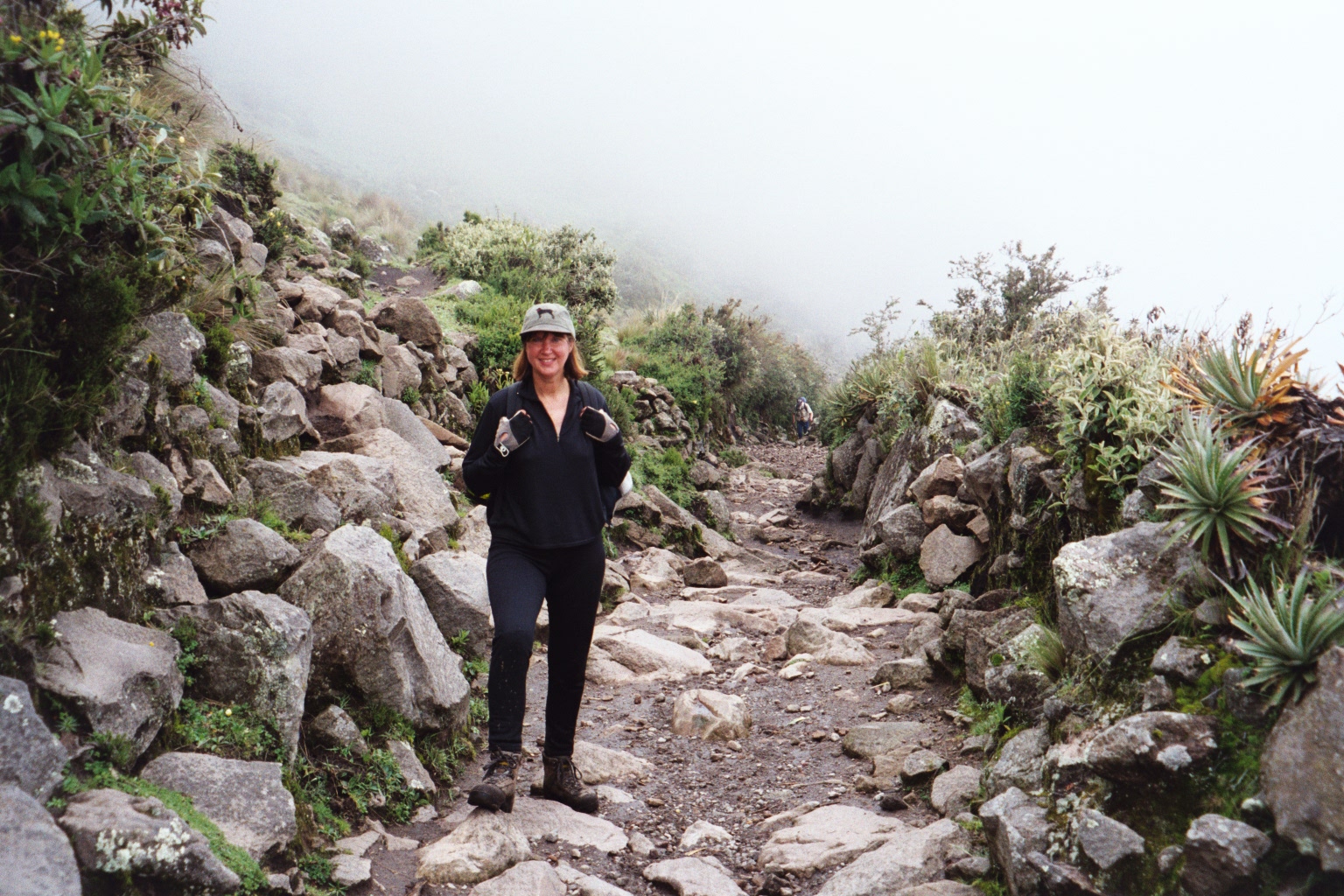
The perfect ending to a perfect day? Not quite! As I lay on the gurney in the emergency room I thought of the wisdom of Confucius: men stumble over molehills, not mountains. My travels and trekking have taken me from the Andes to the Alps, and the Himalayas to the Highlands of Scotland, and never an injury nor illness, except for some altitude sickness. Yet, a small molehill of a mountain in New Hampshire humbled me.
My everyday life revolves around working as an ICU/ER nurse at BWH. But on my days off, the mountains of New Hampshire beckon. This year, I was attempting to summit all of New Hampshire’s 4,000 footers, of which there are 48. I was halfway through and looking forward to completing the last half at a leisurely pace this summer.
Because of my interest in sports, the wilderness, and remote adventure travel, I had gone on in my career to pursue additional education in travel medicine, and its close cousin, wilderness medicine. Earlier, I had taken a wilderness first responder (WFR) course in New Hampshire.
My background as a nurse, and specifically a WFR, has been very useful. On many occasions I assisted ill or injured companions, or other hikers, with such diverse ailments as altitude sickness, diarrhea, fevers, and injuries. I always carry basic first-aid gear no matter how casual the hike. Of course, I believed it would be used for someone else, not for me.
It was one of the few rain free days in June when three companions and I decided to take a short drive to New Hampshire for a quick day hike. It was too beautiful to stay at home after all the bad weather. We chose a short hike, 4.5 miles to the 4,000 feet summit and anticipated less than a three hours climb to the top. There we would enjoy lunch with a beautiful view.
The beginning of the trail meandered through the woods and crossed two rivers. The spring flowers were still in bloom and there was the fragrant aroma of the woods. We lithely jumped from slippery rock to slippery rock and crossed each rushing stream without getting our boots soaked. However, as the trail started to ascend steeply there was mud, slippery rock, and lots of puddles. My boots were getting wet and muddy even though I tried wiping the soles against the trees.
We then came upon a rocky area that was very wet and slippery from the recent rain. In a matter of a milli-second my left foot lost its grip on the rock and I ended up plummeting. I dropped several feet onto a rock ledge below. Instinctively, I put my arm out to break my fall and it took the whole weight of my body. I heard a snap that sounded like the breaking of a dried branch.
I needed to carefully do my own head to toe assessment. Fortunately, I had not hit my head, neck, or back. Since my arm took the hit, I knew the rest of me didn’t land hard enough, or fall far enough, for any internal bleeding. My left hip and thigh, which took the secondary hit, were quite bruised, but I was sure I could walk. As soon as I looked at my left arm my worst fears were confirmed. I knew that I had several fractures. My hand was dislocated and was turning numb quickly. I could barely move my fingers. After taking inventory of my injuries, I decided the only real issue was my arm. It would require a tight splint for the long walk back down.
I directed my friends on how to fashion a sling from my long-sleeve shirt. There are so many ways to improvise almost anything from supplies on hand. My medical pack included a splint, ace bandages, bandages for bruises and wounds, as well as pain relievers. This is more than most people take, but I was sure glad I had them.
Nearly four miles and 3,500 feet below was the car. The packs were divided up and we started an arduous and difficult four hours journey down the mountain. We then drove to the nearest emergency room in New Hampshire. It was a strange experience for me to be a patient instead of a caregiver. My x-rays indicated my arm indeed had several fractures and I would require surgery.
As I learned only too well, a casual day hike can as easily result in an emergency situation. One doesn’t need to carry supplies adequate to amputate your arm, but common sense dictates that you need at least minimal first-aid gear and supplies for the unexpected night out. The stories are legion of people getting lost late in the day, or having a problem, and finding themselves unable to get down until the next day. I urge everyone heading out on a day hike to carry a small first-aid kit, extra clothing, water, and a flashlight.
I still look back on that day and can’t believe I injured myself on an easy day hike. The goal for outdoor enthusiasts is to be prepared for an emergency and have a plan, even in the most innocuous situations. Of course, I’ll be back out finishing those 4,000 footers later this year.
Look for an extended version of this narrative to appear in the January 2004 issue of Wilderness & Environmental Medicine.